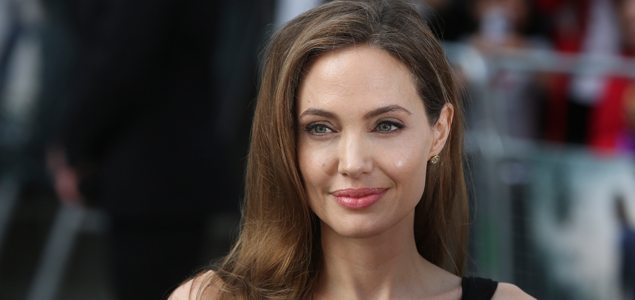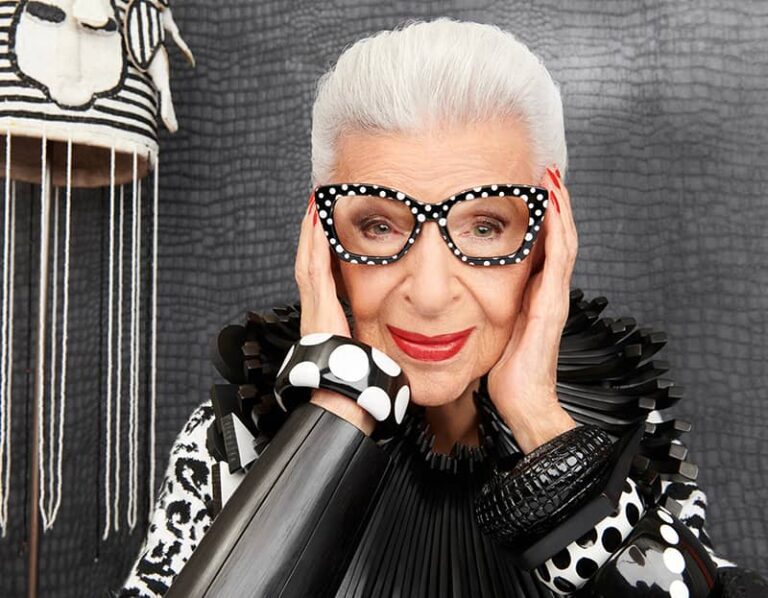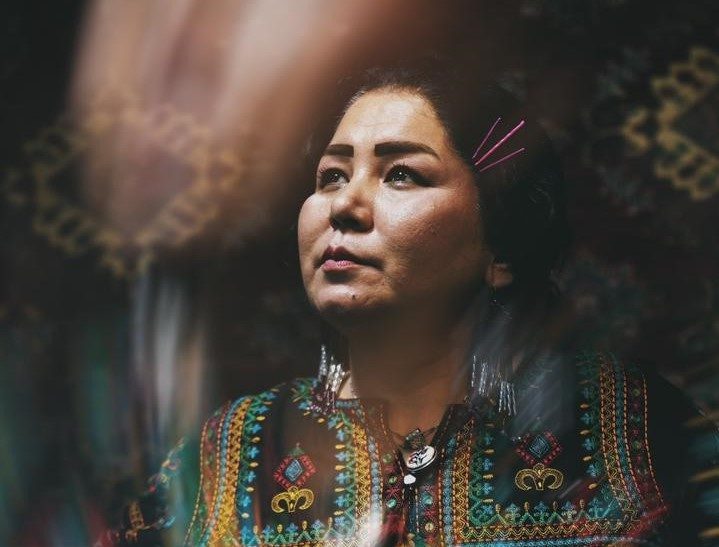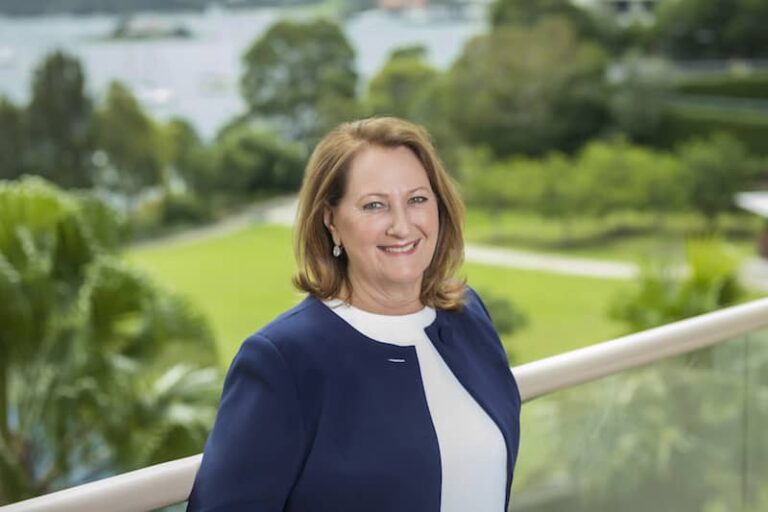When Angelina Jolie told the world she’d had both her breasts removed in a bid to ward off cancer, we couldn’t help but sit up and take notice. Her courage has empowered women everywhere to take control of their own health.
Never one to travel a predictable path, Angelina Jolie surprised us all again in May this year with an article she wrote for The New York Times announcing she’d had a double mastectomy to reduce her risk of getting cancer.
The world has come to know Jolie not just as a multi-award-winning actress, producer and director – she reportedly jetted into Sydney in August on a 24-hour flying visit to scope out locations for her next project Unbroken – but also as a free spirit and human rights activist driven to making a difference in the world. As radical as she is beautiful, she also has a seemingly endless capacity to do what we least expect.
Jolie, 38, grew up in the movie business. In her 1982 screen debut at seven years old in Lookin’ to Get Out, she played the daughter of her own father, Jon Voight. She later dropped the surname Voight in favour of her middle name, Jolie. Her wild-child formative years, she admits, were fraught with depression, self-harm and drug use, and her first boyfriend moved into the home she shared with her mother and brother when she was just 14.
The day she married her first husband Jonny Lee Miller, at age 20, she wrote his name in blood across the white T-shirt she donned for the ceremony. Later, Jolie wore the blood of second husband Billy Bob Thornton in a vial around her neck. She is said to remain close friends with Thornton, telling him about her double mastectomy before going public with the news.
Even her movies are unpredictable. One minute she’s directing a film about love and war in Bosnia, the next she’s lending her voice to the tigress in Kung Fu Panda 3. That we don’t quite know what she will do next is part of what makes her so enchanting.
Although Jolie still has a penchant for wearing black and claims to be the same “punk kid with tattoos” she ever was, her public image tells another story.
A United Nations goodwill ambassador for a decade, in 2012 Jolie was appointed Special Envoy of High Commissioner Antonio Guterres. The actress has three adopted children – from Cambodia, Vietnam and Ethiopia – as well as three biological children with fianceÅL Brad Pitt. It is her love for her children, and the memory of losing her own mother, Marcheline Bertrand, that has been the biggest driver for her to take such dramatic action to reduce her risk of dying early from cancer.
Jolie’s mother died at age 56 after fighting ovarian cancer for almost a decade, and unfortunately passed on the BRCA1 gene mutation to her daughter. BRCA genes 1 and 2 are known as tumour suppressors and help your body fight cancer. However, mutation of these genes has been linked to hereditary breast and ovarian cancer. Very few breast cancers result from an inherited gene mutation, but those with a defect in BRCA1 have a 65 per cent risk of cancer on average. Jolie’s maternal grandmother is likely to have also carried the faulty gene – she also battled ovarian cancer.
In a series of medical procedures over three months from February this year, Jolie had both breasts removed and reconstructed with implants, reducing her risk of developing breast cancer from 87 to just 5 per cent.
“The decision to have a mastectomy was not easy,” Jolie says. “But it is one I am very happy that I made … I can tell my children that they don’t need to fear they will lose me to breast cancer … they know that I love them and will do anything to be with them as long as I can.” For women who have lost their mothers to breast or ovarian cancer, the motivation not to put their own children through what they endured themselves is powerful. “She held out long enough to meet the first of her grandchildren and to hold them in her arms,” Jolie says of her mother. “But my other children will never have the chance to know her and experience how loving and gracious she was.”
Jolie, whose mother gave up her movie career to look after Jolie and her brother, has said she will never be as good a mother as her own. “She was just grace incarnate. She was our best friend.”
RAISING AWARENESS
According to Associate Professor Judy Kirk, director of the Familial Cancer Service at Westmead Hospital, Sydney, requests for genetic testing have increased dramatically since Jolie’s story was published in May, with four times as many referrals coming in each week. Kirk says the publicity was “fantastic in many ways” because a lot of families for whom genetic testing was appropriate came forward. “On the other hand it has also worried some women who are not at increased risk,” she says. These women have had to be reassured that they don’t need a genetic test.
The other unexpected fallout has been women who know they have the BRCA1 or BRCA2 gene mutation, but have chosen not to have surgery to reduce their risks of breast and ovarian cancer. “They suddenly sort of felt maybe they should be considering mastectomies when otherwise they’d been happy with their decision,” Kirk says.
Jolie’s influence should not be underestimated. In this age of celebrity worship, her trendsetting power is huge – just look at the number of copycats now calling their babies Vivienne, the name Jolie chose for her newborn daughter in 2008. The name’s popularity skyrocketed to levels not seen since the 1940s. It will come as no surprise that the same was true for the name Angelina; it soared in popularity the year after Jolie’s performance in Girl, Interrupted won her the 1999 Academy Award for best supporting actress, a Golden Globe Award and a Screen Actors Guild Award and launched Jolie into superstardom.
Kirk says around one in 800 women in Australia are walking around with a faulty BRCA1 or BRCA2 gene, and many people don’t understand why everyone can’t have a genetic test. “The reason is that even in those strongest of family histories where there must be something inherited that’s causing this, we test for BRCA1 and 2 and we often don’t find anything … We still think there’s something inherited in that family but we can’t find it and that’s in about 80 per cent of the families that we test.”
“We only test when there’s a strong indicator that we’ll find something and, secondly, even when we do, the majority of families affected are not accounted for by faults in those two genes.” Only five per cent of breast cancers are caused by BRCA1 and 2 mutations. We thought there would be BRCA3 and 4 but people have been looking for them for 20 years and haven’t found them. It’s more likely to be a combination of mutations in more moderate risk genes that accounts for the risk in these families and we don’t know what they are yet.”
Testing in New Zealand is only possible in families that qualify for testing, usually after a blood sample has been taken from a relative with cancer. There are no private testing facilities in New Zealand, but the test is free for families that qualify.
Rachel Robertson, aged 40, opted to pay for a private genetic test in Sydney. It was done the day after the Angelina story broke and, when she spoke to MiNDFOOD, Robertson was three days away from getting the test results. The waiting is difficult and Robertson is nervous, particularly because she has decided to have a double mastectomy and hysterectomy if the results are positive.
“I’d love it to be a negative result, but at the same time, as brave as those poor women are who have to go through the hideousness of cancer treatment, I’d rather have my boobs chopped off and a hysterectomy than I would battle cancer.”
Robertson’s mother died at age 56, 14 years ago. “You never really get over the death of your mother and it all happened so suddenly. I didn’t even know she was ill.” Five weeks after leaving to travel around South America she received a phone call to say her mum had died. “We were all completely blindsided and they didn’t realise until they did an autopsy that she’d died of breast cancer.” Her aunt and grandmother died of the same disease and now that Robertson is a mother herself – she has a three-year-old son – her decision is easier because she never wants him to lose his mother young like she did.
“If the result comes back positive, it gives me the option of doing something proactive, to take the steps to get the hysterectomy and mastectomy, and in some ways what it will do is remove the cloud of potential doom, the feeling of what could be around the corner.”
Robertson says Jolie’s story carried with it “a strong message that it’s not the end of your life if you have this done; you can carry on and you can still look beautiful and things will be okay.” Several of her friends with a family history of breast cancer have talked about getting tested after reading Jolie’s story, and Robertson says she wouldn’t be surprised if mastectomy rates rose. “Angelina Jolie is somebody who you can respect; you respect her decision and the consideration she’s probably given to the decision … the fact that she has done it with such grace and poise, that she has come out and she has carried on and you see her in the photos and she still looks fabulous in clothes, I think it will increase the rates.”
How Jolie felt about her mother dying so young also struck a chord with Robertson and is another reason she had the genetic testing done. “You know your mother would want to you to do it,” she says. Her mother would have been relieved to know that Robertson’s test came back negative.
UNCONDITIONAL SUPPORT
Jolie has made a point of saying how lucky she is to have the love and support of her fiance Brad Pitt, who was there “for every minute” of the surgeries and on hand to greet her as soon as she came around from the anaesthetic. “We managed to find moments to laugh together. We knew this was the right thing to do for our family and that it would bring us closer. And it has,” she says.
Men find themselves playing the vital role of supporter when breast cancer rears its ugly head, and many struggle to cope during the ordeal. When Paul Leslie, from Kaukapakapa northwest of Auckland, learned of his wife Miffy’s breast cancer diagnosis, he reduced his work hours and took on all the cooking, cleaning, washing and care of their two children, aged 11 and six. “We got through the first bit – double mastectomy, chemo, radiation – we thought we were home and hosed,” he says. But a sore shoulder sent his wife back to the doctor and she discovered the tumours had come back. “When Miffy rang me, I instantly knew that was the beginning of the end. I just knew.”
Leslie’s journey is one of 18 featured in Peter Calder’s new book, She’s Got Breast Cancer, available for free through the New Zealand Breast Cancer Foundation from October. Calder was motivated to write the book after his own wife was diagnosed with breast cancer and he realised men don’t have anyone to talk to about the fact their wife may have lost her breasts, about the stress breast cancer puts on marriages and sex lives, and about the loneliness through a long journey that often sees the woman getting lots of support, but her man not so much.
Leslie found few of his friends wanted to talk about what he was going through, let alone the fact that Miffy could die. “A lot of guys don’t know how to approach the subject. Others you think should be there aren’t there for you, because they just don’t know what to do. Some probably didn’t want to believe it was happening and that was tough for me at times, because I knew in myself that Miffy wasn’t going to make it.” There were only a few people Leslie could bring that subject up with because the others would tell him to stop being so negative, that Miffy would be fine. “So a lot of it I had to keep to myself. And it’s bloody hard walking around for six months knowing that your wife is going to die, when everyone else is believing that she’s going to make it.” Miffy died in September 2012.
Having a mastectomy is just one of the preventative measures women can take to reduce their risks, whether they are carrying a faulty gene or just have a family history of breast cancer. Kirk says most women opt for careful surveillance with a yearly mammogram, ultrasound and MRI after age 30. Studies have found taking the drug Tamoxifen for five years can reduce the risk of breast cancer by 40 per cent, and some women choose to take this course of action.
For women who have been found to have the BRCA1 or 2 gene mutation, there are further choices available. “Women with a gene fault are at risk of both breast and ovarian cancer and the single most important thing they can do, once they have finished [having] their family around the age of 40, is remove their ovaries and fallopian tubes,” Kirk says.
Whether this is the next step in Jolie’s plan to live a long and healthy life is unknown. What we do know is that she chose to share her story because there are many women who do not know that they might be living under the shadow of cancer. “It is my hope that they, too, will be able to get gene tested, and that if they have a high risk they, too, will know that they have strong options,” Jolie says. “Life comes with many challenges. The ones that should not scare us are the ones we can take on and take control of.”
See nzbcf.org.nz for more information on Peter Calder’s book She’s Got Breast Cancer and for information about advance charity screenings of Decoding Annie Parker.
WHEN TO CONSIDER TESTING
If you have two or more first or second-degree relatives with breast or ovarian cancer (first-degree is a mother, sister or daughter; second-degree is an aunt, nephew, niece, or grandparent.)
PLUS:
• Additional relatives with breast or ovarian cancer.
• Breast and ovarian cancer in same person.
• Breast cancer in a male relative.
• Breast cancer diagnosed before age 40 years.
• Ovarian cancer diagnosed before age 50 years.
• Jewish ancestry.
• Member of family with confirmed BRCA abnormality.
Source: Cancer Australia
ANGELINA JOLIE’S MEDICAL JOURNEY
Jolie’s journey was documented, with her permission, in a blog by Dr Kristi Funk from the Pink Lotus Breast Center in Beverly Hills. In it, she details the various stages any patient could expect who is following the same path, from genetic testing and surveillance to preparing for the surgeries and recovering from them afterwards.
Funk writes: “To a large extent, I believe recovery reflects expectation. Angelina expected to feel well, to be active. On Monday, the pathology returned and I called Angelina to confirm our biggest hope: all of the breast tissue was benign. On day four after her mastectomies, I was pleased to find her not only in good spirits with bountiful energy, but with two walls in her house covered with freshly assembled storyboards for the next project she is directing. All the while she spoke, six drains dangled from her chest, three on each side, fastened to an elastic belt around her waist.
“Many women unfortunately do not know that BRCA gene mutations exist and could affect them. Breast and ovarian cancers take lives every day – knowledge and action can help prevent the premature loss of those who love us, and whom we deeply love in return.
“Like Angelina, I urge women who feel they might have reason to be at risk for a BRCA gene mutation – perhaps because of a strong family history of cancer – to seek medical advice and to take control of their futures.”
Read more about Angelina Jolie’s journey at pinklotusbreastcenter.com.







